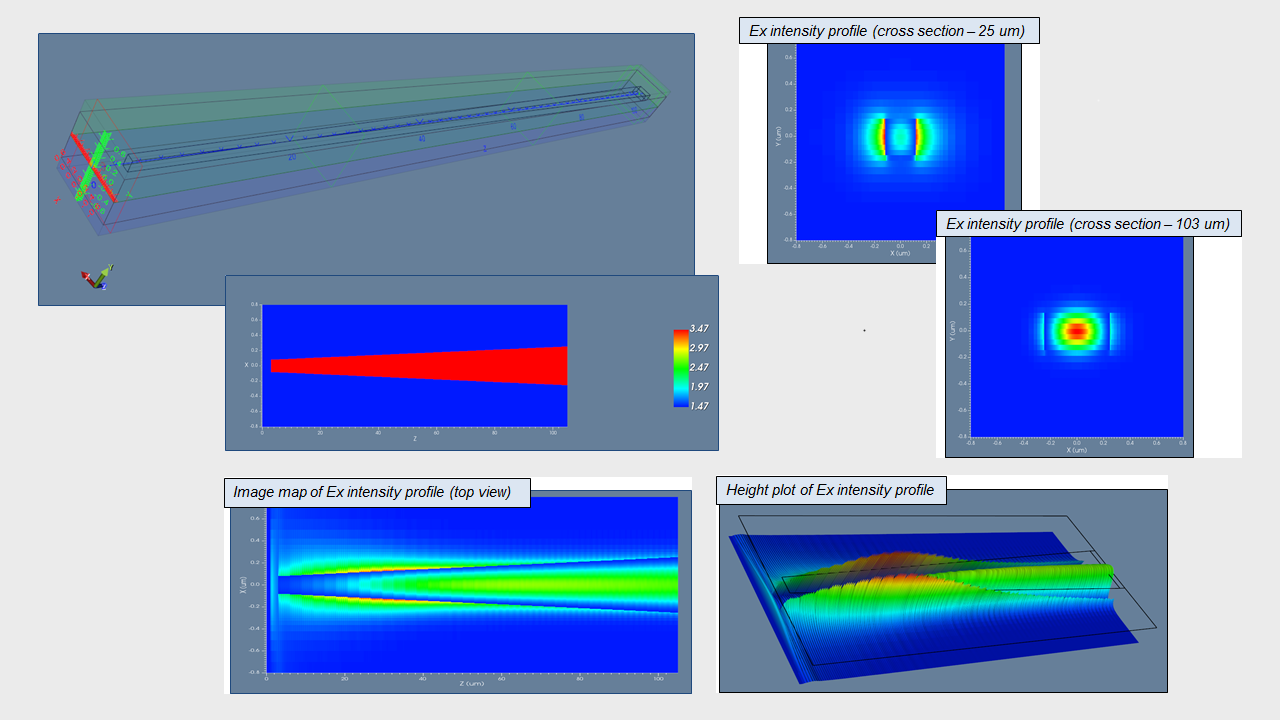Two approaches for coupling light on a high-confinement chip with sub-micron waveguides are gratings or taper couplers. This application example demonstrates the operation of a nanotaper for fiber-to-waveguide coupling based on Silicon-on-insulator (SOI) technology. Results of a 3D OptiFDTD simulation of a linearly tapered Si waveguide (buried in SiO2 waveguide) are presented.
Compatibility:


